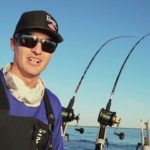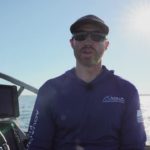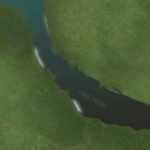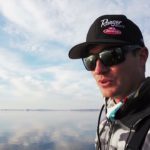Mid-Lake Walleye
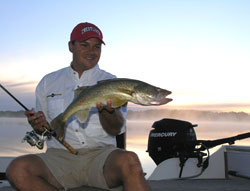
Anglers and fish are different. Humans act upon previously gained information while fish follow primal instinct, two very different behaviors. Thinking like a fish can become quite difficult, since fish really don’t “think” at all.
Walleye location in late summer into fall is one of those periods where being a human can be confusing. For instance, while fishing a lake that you may not have visited for months, it’s common to believe the fish will be in the same area as your previous trip. Yet crawling along the shallow expansive flats that were once productive during the spring may yield only a few smaller fish or none at all. It’s time to change your plan.
Mid-lake humps that had few fish in the beginning of the season now provide a great feeding area for warm water walleye for several reasons. First, the rapid incline out of deep water is an attraction to bait and sometimes the minnows get pushed into the structure because of heavy winds. Second, there’s typically easy access to deep, cool water where schools of walleye can find respite from warm water. And third, humps often have the fast drop-offs and sand or rock substrate that walleye love.
Fishing mid-lake humps can be productive from now through the fall, but finding the areas proves to be the most difficult piece of the puzzle. A good GPS with a mapping chip can lead you right to the spot, but there are most definitely humps in the lake which are not marked on any paper map or electronic chart. These can only be found using your electronics while taking the time to strategically zigzag across the lake. However, the time spent discovering lesser-known humps in worth the effort, since un-plotted territory often receives far less fishing pressure.
When you do arrive on a mid-lake hump, which are often referred to as “sunken islands”, make an initial pass to see if any fish or bait is present. It’s best to do this quietly, which is when I’ll deploy my 4-stroke Mercury Pro Kicker motor to move stealthily around the perimeter and finally over the peak. If no fish are present, fire up the main outboard and cruise to the next hump. Fishing a structure with no fish is often wasted time, especially if a nearby hump has an active school of walleye.
A variety of techniques work to effectively fish a hump. Lindy rigs and jigging are great options with live bait, but slip-bobbers are another wonderful presentation since the area you’re fishing is often quite confined, many times only the size of a few boats. Lindy’s Pro Series slip bobber rigs are an easy way to present a leech or minnow and the appeal of their Bobber Bug hook and small Indiana blade attractor are irresistible to hungry walleye. Slip bobbers can be used well into the night and many lighted options are available to extend your fishing hours.
Humps can also be effectively fished with a crankbait. Again, a quiet four-stroke is best for pulling cranks, but speed often makes the difference. Making a single pass over a hump with a crankbait may not generate a strike. Sometimes it takes ten or twenty passes to finally catch a single fish, so listen to what that fish is telling you. Maybe you were traveling at a specific speed or possibly moving over the hump from a certain angle that may cater to the position of the school or individually scattered fish. Keeping that open line of communication will help you “think” more like a fish and put more walleye in your livewell!


